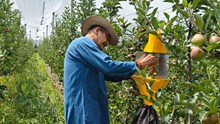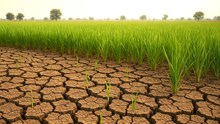
Once again, June 5th is upon us—World Environment Day. And with it returns the annual ritual of hollow gestures: a bonsai banyan in a decorative pot, a sapling of jamun or peepal planted in the scorching summer sun, photo-ops with leafy pots clutched like trophies. Social media will be flooded with slogans—“Green Earth, Clean Earth”—while officers deliver speeches and others nod out of formality. Come June 6th, we all retreat to our regularly scheduled programming—our single-minded commitment to environmental destruction.
Truth be told, we never truly cared about the environment. Our entire development model has no space for nature. What have we learned from science? Only that every technological advancement often comes at the expense of nature. We have embraced science as a tool of progress while discarding wisdom into the dustbin. As a result, "development" and "environment" now stand like two swords in the same scabbard—unable to coexist.
Climate change is no longer a theoretical debate but a toxin in our lungs. In some places, temperatures are crossing 50°C; elsewhere, it snows in June. It feels as though the Earth has lost its balance—oscillating between a blazing inferno and whispers of a new Ice Age. In May 2024, India recorded its highest-ever temperature: 50.5°C in Phalodi, Rajasthan. Delhi too soared to 49.9°C on May 29.Clouds no longer heed meteorological predictions. Seasons no longer arrive on schedule, nor do traditional almanacs predict rains with former accuracy.
According to the IPCC’s 2023 report, the reliability of the Indian monsoon has declined by 27% over the past 50 years. The gap between “expected rainfall” and “actual rainfall” now averages 19%. Yet, our development blueprint remains allergic to sustainability.Take the new environmental messiah: the electric vehicle (EV). As if EVs are the sacred Ganges water that can wash away all our environmental sins! But have we ever asked our conscience how clean the process of battery manufacturing and disposal truly is? According to India’s Central Pollution Control Board, nearly 70,000 tons of lithium-ion batteries were imported in 2022–23—95% of which have no safe recycling mechanism. Most are either non-recyclable or only partially processed, leading to toxic waste.
And where does the electricity that charges these green halos come from? Is coal-based power generation eco-friendly? Over 72% of India’s total electricity is still produced in thermal plants, the vast majority of which run on coal—massive emitters of carbon dioxide, sulfur dioxide, and fly ash. (Source: Central Electricity Authority, 2024)Even the much-revered solar power—our modern-day sacred cow—has a dark underbelly. Can we recycle solar panels completely? According to France’s ADEME, only 10–15% of global solar panels are currently being recycled effectively. India lags even further behind.
Meanwhile, millions of tons of chemical fertilizers are being poured into our fields, poisoning water, land, and air alike. Pesticides are not just killing soil—they are quietly entering our bodies. As per the FAO’s 2022 report, 30% of India’s agricultural land suffers from moderate to severe soil pollution.
Who’s to blame? Not just individuals but the powerful multinational corporations whose products, brands, and profit margins are guarded at the cost of the planet. Many governments, it appears, function more like their subsidiaries than sovereign entities. So we must ask—do we truly wish to keep this blue planet habitable? Or perhaps the deeper question: Are we—the human species—even worthy of inhabiting it? Have you ever heard of a goat, a lion, or a leopard annihilating a plant or animal species? No.
That is a singular human achievement. In the name of development, we murder forests, erase biodiversity, and yet call ourselves "civilized." According to the United Nations Biodiversity Report (2020), around 150 species are going extinct daily due to human activities. We celebrate landing on the moon, dream of colonizing Mars. But pause for a moment—if Earth, with its freely available oxygen and naturally replenishing water, becomes uninhabitable due to our own misdeeds, then how long can artificial air and water sustain life on barren celestial rocks?
We do not need to reject science, but unbridled, reckless science spells ruin. If safeguarding humanity is our goal, we must begin by saving this planet. Before we search for a “habitable planet,” we must learn how to build a habitable society. That’s why, perhaps more than ever, we must cast off the arrogance of “developed” society and turn our gaze towards the tribal way of life—those communities who, for millennia, have coexisted with nature in a symbiotic relationship. What we dismiss as “backward tribals” actually carry in their lives a deeper ecological truth: development is not skyscrapers and expressways, but harmonious coexistence with soil, water, and forests.
They show us how to farm without poison, how to respect water, how to preserve forests while living within them. Their knowledge of mixed cropping, traditional seeds, and rare medicinal plants holds immense ecological and economic value—treasures we discarded in our manic race toward so-called modernity. But we must approach them not as "teachers," but as humble students. Only then might we stand a chance of truly saving this planet.
In conclusion, World Environment Day is not merely a date—it is a solemn warning. It reminds us that the next generation will need more than smartphones and subways. They will need drinkable water, breathable air, and sustainable life systems. Today’s scientific gaze must merge with the ancient seer’s vision. Let us never forget what our ancestors once declared in Sanskrit:
“Pṛthivyāṁ trāyate yaḥ sa dharmaḥ” (He alone is righteous who protects the Earth.)
















